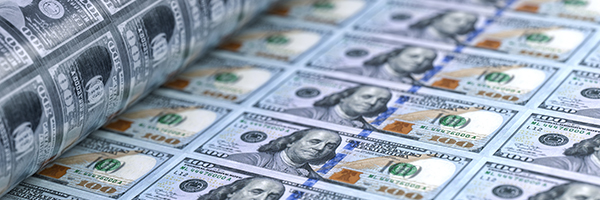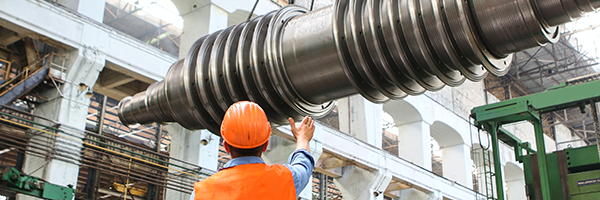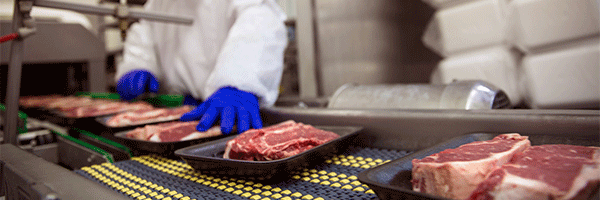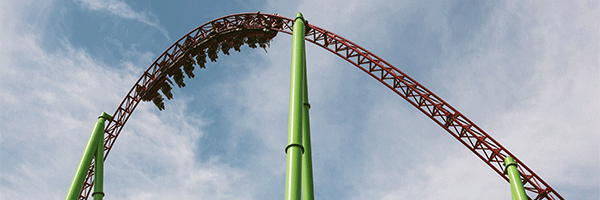 May 23, 2025
May 23, 2025
What You Need to Know Today:
Target cuts its earnings forecast for the rest of 2025
Target’s cut in guidance for the remainder of 2025 is another worrying sign that U.S. consumers are pulling back. Today’s earnings report from Target (TGT) was never going to look pretty. The company was certain to report some drop in revenue as a result of customer boycotts after it scaled back diversity, equity and inclusion initiatives early this year following criticism by the White House and conservative activists. But the news that really hurt the stock was that Target had cut its forecast for earnings for the full year.

Putting my VIX volatility options trade back on tomorrow, Friday
The CBOE S&P 500 Volatility Index (VIX) dropped another 4.24% today to 17.84. I think, once again, the financial markets have become way too complacent about risk. And so it’s time to buy Call Options on the Vix “fear index,” betting that at least one of the many potential volatility events on the horizon puts some fear back into the markets.

Tariffs made us do it: Walmart says it will almost certainly raise prices; that’s really bad news for other retailers
Walmart warned Thursday that price increases look certain–possibly within weeks–even after President Donald Trump announced a deal to reduce tariffs on Chinese exports to “just” 30%.
“We’re positioned to manage the cost pressure from tariffs as well or better than anyone, but even at the reduced levels, the higher tariffs will result in higher prices,” Walmart chief executive Doug McMillon said

New downward pressure on the dollar
The dollar erased this week’s gains on speculation that the Trump Administration favors a weaker dollar and will make promises to let currencies appreciate part of any trade deal with the United States.

U.S. oil inventory levels rise again, but is worse still to come?
U.S. crude stockpiles rose by 3.45 million barrels, the biggest gain since March, the Energy Information Administration said Wednesday. And this comes before the latest round of production increases from OPEC Plus have kicked in. In April. OPEC and its allies added just 25,000 barrels a day of production, a fraction of the scheduled 138,000 barrels a day production increases. A further boost to production quotas is expected at OPEC’s June 1 meeting.

Please watch my new YouTube Video: Hot Money Moves NOW–the weak dollar
Today’s Hot Button Moves NOW video is: Dollar Down, Yen and Euro Up. Recently, the market has bounced back from the dip after April’s tariff announcements, but there’s something people might be overlooking: if the Fed cuts rates due to an economic slowdown, the dollar will likely weaken. That’s not all bad—it could mean cheaper U.S. exports and lower gas prices globally (tariffs permitting). But it’s surprising how few investors are factoring this in. A while back, I added the Invesco Japan Yen Currency Shares Trust (ETF) to my volatility portfolio, and it’s already up about 10% year-to-date as the yen strengthens against the dollar. Similarly, the Invesco CurrencyShares Euro Trust (FXE) has gained 9.38% this year. (All those performance figures are from before the China tariff deal. Since then the dolor was up on Monday then down on news that the U.S. had signaled to South Korea that it would like a weaker dollar.) Living in Venice, I’ve noticed the euro’s strength firsthand—great for investments, not so great for my daily espresso budget! If you’re looking for a relatively safe play in uncertain times, shifting some dollar-denominated assets into yen or euro ETFs could give you a solid 3-6% return while the dollar softens. The U.S. Dollar Index (DXY) was (before Monday) already down nearly 8%, so diversifying could be a smart move.

Emergency Special Report: What to do NOW after the Trump tariff tumble–complete
Today the Standard & Poor’s 500 fell 4.25%, dropping into a correction. The NASDAQ Composite dropped 5.43%, also into a correction. The small cap Russell 2000 lost 6.59%. We don’t have to search for the cause of todays drop: yesterday President Donald Trump announced tariffs with a global minimum rate of 10% and rates on individual U.S. trading partners that included a 20% tariff on the European Union and an additional 34% tariff on Chinese goods. The fear is that the tariff increases will set off a global trade war of retaliation, and that the tariffs will push the United States into either a recession or stagflation. Take your pick about which to fear more. So what do you do NOW? That’s the topic of this Emergency Special Report.
Live Market Report (20 minute delay)

Want to know why the market was up on bad GDP report?
Seems like we’re back again to a world where all the bad news is good news.

GDP falls in first quarter at 0.3% annual rate
The U.S. economy contracted at annualized rate of 0.3% in the first quarter of the year. That’s much slower growth than the positive 2.4% rate in the fourth quarter of 2024. This is the first quarterly decline in real GDP since the first quarter of 2022, and it was below expectations for a positive growth rate of 0.2%.

GM pulls its earnings guidance for 2025 even as White House announces changes to auto tariffs
Today General Motors announced that it was pulling its previous earnings guidance for 2025 and putting $4 billion in share buybacks on hold until it has more clarity on the impact of U.S. tariffs.

More signs of stress in the high-yield (aka junk) bond market
Risky corporate-debt markets–what you and I call the junk bond market–have room to drop further due to to damage from the tariff war.“We’re likely to see spreads widen from here as we see further deterioration in risk assets and in overall credit quality,” Mitch Garfin, BlackRock’s co-head of leveraged finance, told Bloomberg.

Selling my last 2 VIX Call options–but not because we’re done with volatility
Today, Monday April 28, I’m selling my last two Call Options on the VIX, the CBOE S&P 500 Volatility Index. Not because we’re done with volatility. No way. I expect lots more volatility in the weeks and months ahead. And I expect to put this trade on again. But because these two options expire on May 21

Tech stocks face high earnings hurdle
This week’s quarterly earnings reports from Microsoft (MSFT), Apple (AAPL), Meta Platforms (META) and Amazon.com (AMZN) face high earnings expectations from Wall Street analysts. Analysts expect the Magnificent Seven-—which also includes Alphabet (GOOG), Tesla (TSLA) and Nvidia (MVDA)-—to deliver an average of 15% earnings growth in 2025. That expectation has barely budged since the start of March despite the uncertainty of the Trump tariffs. The four megacaps reporting this week collectively have a nearly 20% weighting in the Standard & Poor’s 500.

Shein, online Chinese retail giant, raises U.S. health and beauty prices by 51%
Fast-fashion giant Shein Group raised U.S. prices of its health and beauty products by 51% or more. E-commerce shopping platforms like Shein and Temu face a 120% tariff on many of their products due to the U.S. government’s decision to end the “de minimis” exemption for small packages from mainland China and Hong Kong. Exporters in recent years had capitalized on the exemption, which allowed goods valued at under $800 to enter the U.S. without tariffs or customs duties. Washington will also increase the per-postal-item fee on goods entering after May 2 to $100 and even higher after June 1

Tariffs could mean some empty shelves in U.S. as early as May
President Donald Trump’s tariffs on goods from China have disrupted trans-Pacific supply chains. In the three weeks since the tariffs took effect, ocean-container bookings from China to the U.S. are down by more than 60%, Ryan Petersen, founder and CEO of Flexport, a global shipping company, told the Washington Post. Cargo carriers that bring Asian goods to the Port of Los Angeles, the nation’s main Pacific gateway, have canceled 20 port calls next month, more than three times as many as last month, according to port data. The consequence will be “empty shelves in U.S. stores in a few weeks and covid-like shortages for consumers and for firms using Chinese products as intermediate goods,” Torsten Slok, chief economist for Apollo Global Management, told the Post. “Significant” layoffs in trucking, logistics and retail are likely as soon as May, Slok said.

Saturday Night Quarterback says, For the week ahead expect…
Finally, maybe some hard data on how President Donald Trump’s tariffs are affecting the U.S. economy. At 8:30 New York time om Wednesday the Bureau of Economic Analysis is scheduled to release its first take on the GDP rate in the first quarter of 2025. Economists surveyed by the Wall Street Journal project the U.S. economic output rose at an annual rate of just 0.4% in the first quarter. That would be down from 2.4% in the last quarter of 2024 and the slowest growth since 2022. This will be the first hard data that might show the impact of President Trump’s tariff moves.

Not good: PepsiCo cuts its 2025 guidance as sales, tariffs kill the crunch
On Thursday, PepsiCo cut its full-year guidance outlook, citing a reduction in consumer spending as well as the impact of higher tariffs.
“Relative to where we were three months ago, we probably aren’t feeling as good about the consumer now,” Jamie Caulfield, PepsiCo CFO, told Wall Street analysts and investors on an earnings call Thursday morning.

Is the Powell Put back?
The S&P 500 gained more than 4% for this week. Some of that was the result of talk from the White House about possible tariff negotiations with China.As the week wore on, though, attention shifted from tariff talk to comments from Federal Reserve officials that seemed to suggest that the central bank might consider cutting interest rates as early as its June meeting if economic growth slowed. Yep, the Powell Put is back. In this scenario, bad earnings and bad economic news become good news because they push the Federal Reserve closer to cutting interest rates.

Economists say recession odds now a coin flip
First, the optimists among economists who believe the United States will dodge a Recession. And then the pessimists who say we’ll see the economy shrink in the first quarter of 2025. (First quarter GDP is scheduled to be reported on the morning of April 30.)

China denies trade talks with Trump
President Donald Trump said his administration is talking with China on trade. This came after Beijing denied the existence of negotiations on a deal and demanded the United States revoke all unilateral tariffs. “They had a meeting this morning,” Trump said Thursday during a meeting with Norway’s prime minister when a reporter asked about the Chinese statement. Pressed on which administration officials were involved in discussions, President Trump said, “it doesn’t matter who ‘they’ is. We may reveal it later, but they had meetings this morning, and we’ve been meeting with China.” Not so, Chinese Commerce Ministry spokesman He Yadong said Thursday.

Unilever and Nestle results say more pain is coming to a shopping cart near you
Unilever (UL) and Nestle (NSRGY) both posted better-than-expected sales in the first quarter. Because they were able to push prices higher to counter surging commodity costs.
That’s not good news for consumers or food-price inflation. Both companies said customers will have to take some of the pain as a global trade war and surging commodity prices lift their costs again.

Read the fine print on yesterday’s tariff “news”
Yesterday stocks rallied for a second day on “news” that President Donald Trump was considering plans to cut tariffs on China’s goods. The Wall Street Journal reported that under the proposals, the range could come down to between 50% to 65%–from the current 145%–as a result of a tiered approach that would see 35% levies on items not considered critical for national security and 100% on “national security” goods.“We’re going to have a fair deal with China,” President Trump told reporters on Wednesday. On Tuesday President Trump had said he’d be willing to “substantially” pare back his 145% tariffs on China. He turned down his aggressive rhetoric a day after meeting with executives from Walmart, Home Depot. and Target, who said import taxes could disrupt supply chains and raise the prices of goods., according to people familiar with the matter. I understand why stocks rallied on these reports. Investors and CEOs are all scared that these tariffs will reignite inflation and send the economy toward recession. The rally on these reports is a sign of how deeply worried financial markets are at this posibility. And how much markets want to believe in a change of course. But because of the intensity of that hope Wall Street and, especially, retail investors, are overlooking the “fine print” in these announcements.

Your grin of the day: Dinosaur meat is coming to a market near you
Cultivated dinosaur meat hits the market in food tech first

Market direction may be uncertain but volatility trend is clear: UP
Despite the rally on Tuesday and Wednesday, the S&P 500 Index is still down around 4% since April 2, the day President Donald Trump announced his tariff plans. Where do stocks go from here in the short term? Depends on the headlines on tariffs and the Federal Reserve, I’d say But the trend in volatility is clear. Stocks are swinging wildly day to day. Since April 2, the Standard & Poor’s 500 has posted five declines of more than 2% and two gains of more than 2% in just 14 sessions.

I’m taking advantage of today’s bounce to do some more selling
I just don’t see the upside here. Even companies that are announcing solid earnings beats are issuing cautious guidance. And as we can see from the example of UnitedHealth Group (UNH) when a stock misses this market doesn’t just take it out to the woodshed for punishment, but stands it up against the barn and shoots it.
Take these two no cost/low cost steps to protect your money–NOW
“You’re not paranoid if they’re really coming to get you” is good advice for the current insane financial market. I don’t think anyone should let his or her fears overwhelm them. It’s never good to make investment decisions in thrall to your emotions. But I don’t think this is the time to ignore your own fears that everything might be headed to hell in a hand basket. My own opinion is that the recent downtrend in the market will continue for a while and that selling will get worse before the trend turns. More than that, though, I’m worried that this selling will turn out to be more than the average Bear market downturn. The financial markets are showing signs of systemic stress of the sort that could turn a “normal” Bear market into a crisis. The key there, of course, is “could.” Odds of a recession have recently moved up to near 50%. Which means that there’s a 50% chance of no recession. The signs of systemic stress that I’ve noted belong to what I’d call “early warning maybes.” I wouldn’t ignore them but they aren’t a guarantee of disaster. So what to do?

Boeing takes a big hit from Trump tariffs
Last week China’s government asked Chinese airlines to pause purchases of aircraft-related equipment and parts from American companies like Boeing. China holds about 20% of the expected global demand for aircraft over the next two decades. President Donald Trump this month raised baseline tariffs on Chinese imports to 145%. In retaliation, China imposed a 125% tariff on US goods.
On Sunday a Boeing 737 Max jet intended for a China’s Xiamen Airlines landed back at the plane maker’s U.S. production hub. The plane was one of several 737 MAX jets–Boeing’s bestselling model–that had been waiting at Boeing’s Zhoushan completion centre for final work and delivery. Boeing’s order book had 130 planes scheduled for delivery to Chinese companies at the end of March for both commercial airlines and leasing firms, Airways Mag reports.



